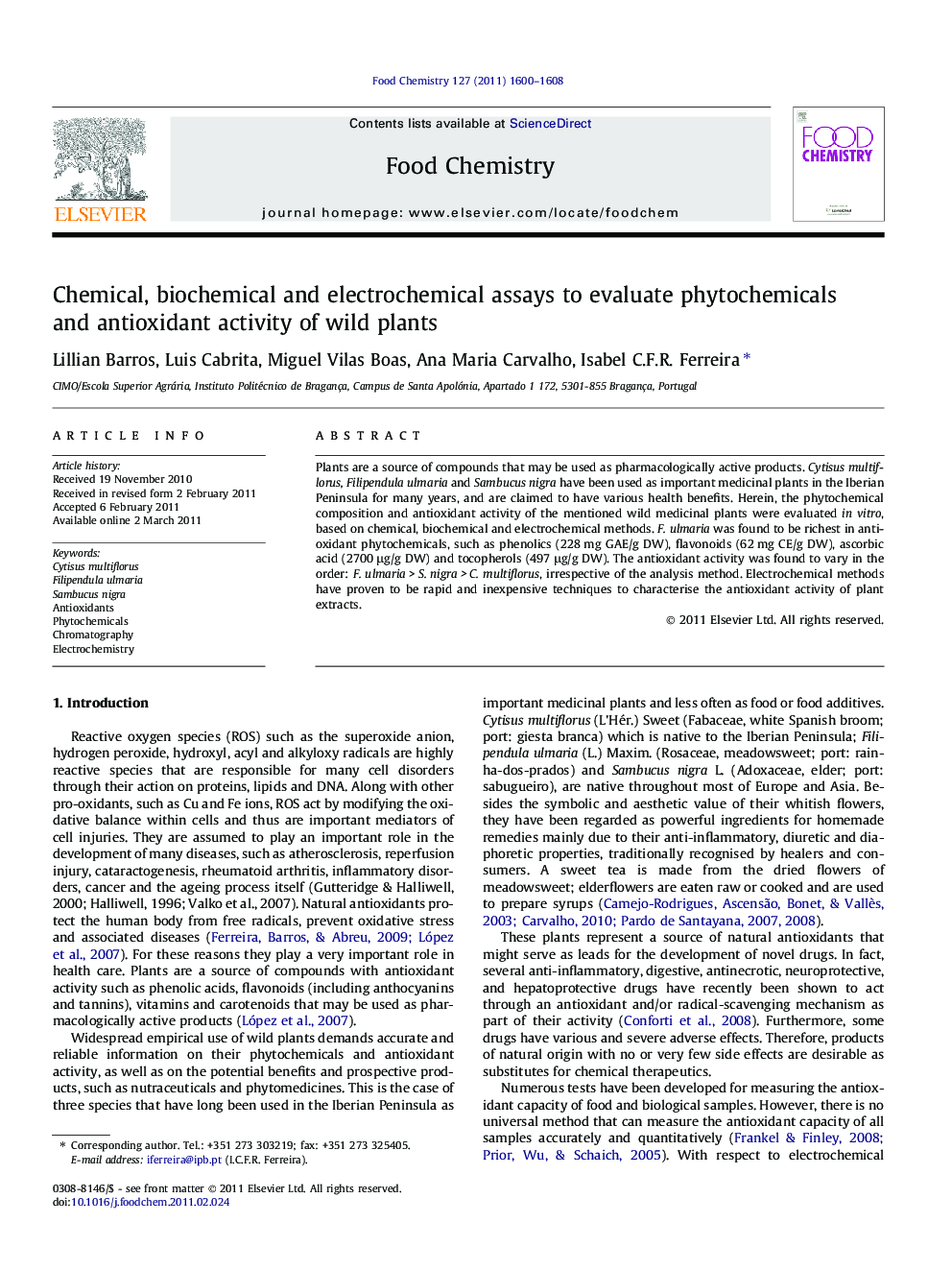| Article ID | Journal | Published Year | Pages | File Type |
|---|---|---|---|---|
| 1184676 | Food Chemistry | 2011 | 9 Pages |
Plants are a source of compounds that may be used as pharmacologically active products. Cytisus multiflorus, Filipendula ulmaria and Sambucus nigra have been used as important medicinal plants in the Iberian Peninsula for many years, and are claimed to have various health benefits. Herein, the phytochemical composition and antioxidant activity of the mentioned wild medicinal plants were evaluated in vitro, based on chemical, biochemical and electrochemical methods. F. ulmaria was found to be richest in antioxidant phytochemicals, such as phenolics (228 mg GAE/g DW), flavonoids (62 mg CE/g DW), ascorbic acid (2700 μg/g DW) and tocopherols (497 μg/g DW). The antioxidant activity was found to vary in the order: F. ulmaria > S. nigra > C. multiflorus, irrespective of the analysis method. Electrochemical methods have proven to be rapid and inexpensive techniques to characterise the antioxidant activity of plant extracts.
Research highlights► Filipendula ulmaria, Sambucus nigra, Cytisus multiflorus have powerful antioxidants. ► Electrochemical methods allow fast and inexpensive antioxidant activity screening. ► There are basis for the ethnopharmacological use of these medicinal plants. ► They could be suitable for incorporation into functional beverages.
